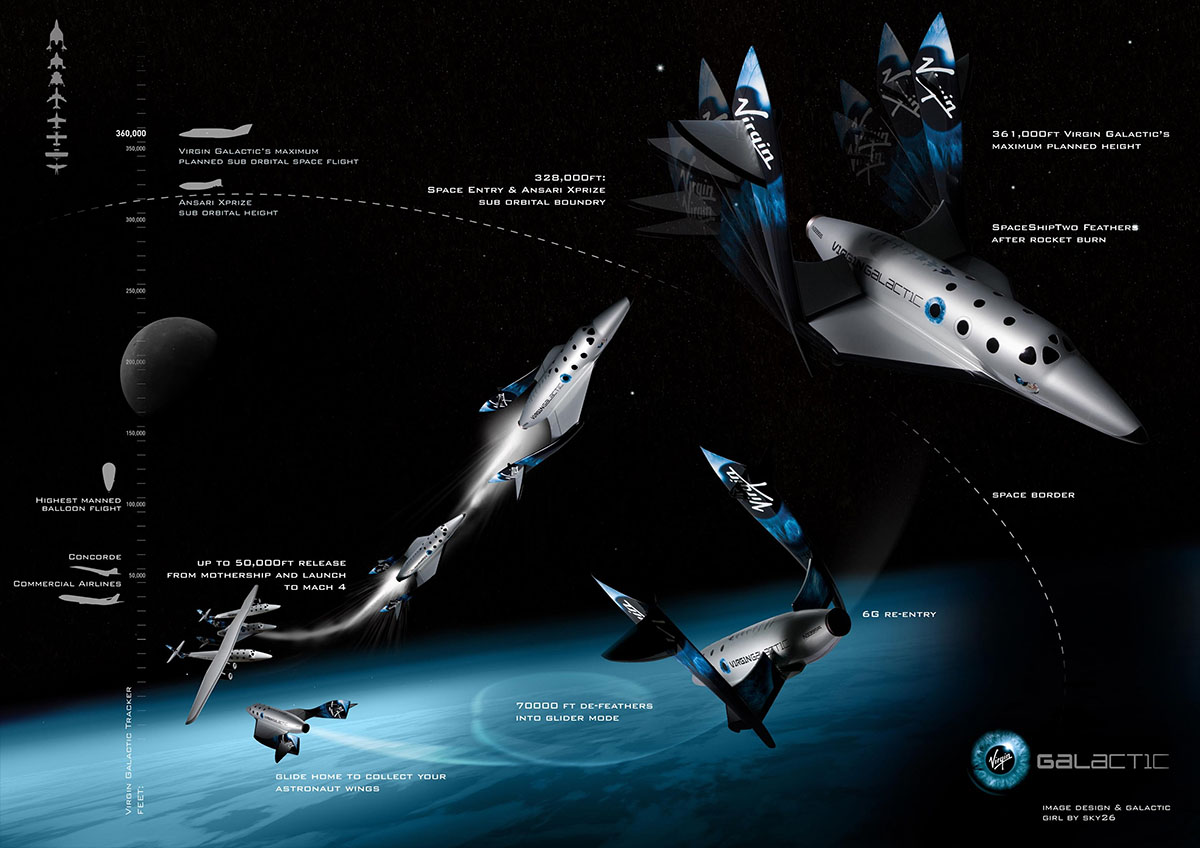the countdown to cheap spaceflight

It’s now 2009 and we’re another year closer to the first commercial spaceflights that Virgin Galactic and XCOR are anxious to get off the ground. Despite the $100,000 to $200,000 tickets, there seem to be plenty of takers among wealthy space enthusiasts who want to go into orbit but don’t want to pay $20 million to stay on a space station like the customers of Space Adventures have done over the last few years. But what can space tourism do for the rest of us and is it just another exorbitant fad for the top one percent?
Space travel as we know it today, involves scientific experiments, sending satellites into orbit to power our TVs and GPS tools and launching probes to other worlds to answer questions posed by geologists, chemists, biologists, physicists and astronomers. Launching a bunch of people with fat wallets on an hour long joyride into space for the annual salary of a junior executive? What questions does that solve? What mission does that fulfill other than giving the rich a new way to spend their extra cash?
Ordinarily, this would be where I’d start comparing the early days of cars and airplanes, but the comparison doesn’t work here. Flying and driving have practical purposes. To get us from A to B faster. Space planes wouldn’t necessarily do that. If we really want to fly faster, we could just build faster conventional aircraft. In the case of space tourism, we’re creating new capabilities and lowering the costs of getting into orbit. One of the reasons why spaceflight costs so much is because rockets are thrown away. Imagine a car you could only drive once. It would still have to be built like any other car so it could be safely driven but it would be impossible to fill up its gas tank. You’d be spending thousands of dollars with every trip to the store if you have to buy new a car every time you get back.
Same thing happens with a rocket. Powerful space planes able to ferry humans and cargo into orbit would be completely reusable. You pay for their construction and maintenance while you charge for its use. After a relatively short while, you make back your money and start running your operation at a profit. The more space planes there are being operated profitably, the less space travel costs. What space tourism does, is allow us to test how well space planes work and give us a platform from which to build bigger and more capable spacecraft without having to rely on either the military or the government for funding and testing.
Even though the reality behind space tourism and commercial space companies is the fact that they’re pet projects for billionaires with a lot of passion and could fail when another recession or economic calamity hits us too hard, the orbital thrill rides built and financed by the rich for the rich, are actually getting us one step closer to cheap commercial spaceflight without using one bit of taxpayer money. Fad or no fad, whatever we learn from space tourism will go a long way towards getting humans and technology into space quickly, easily and cost-effectively.





